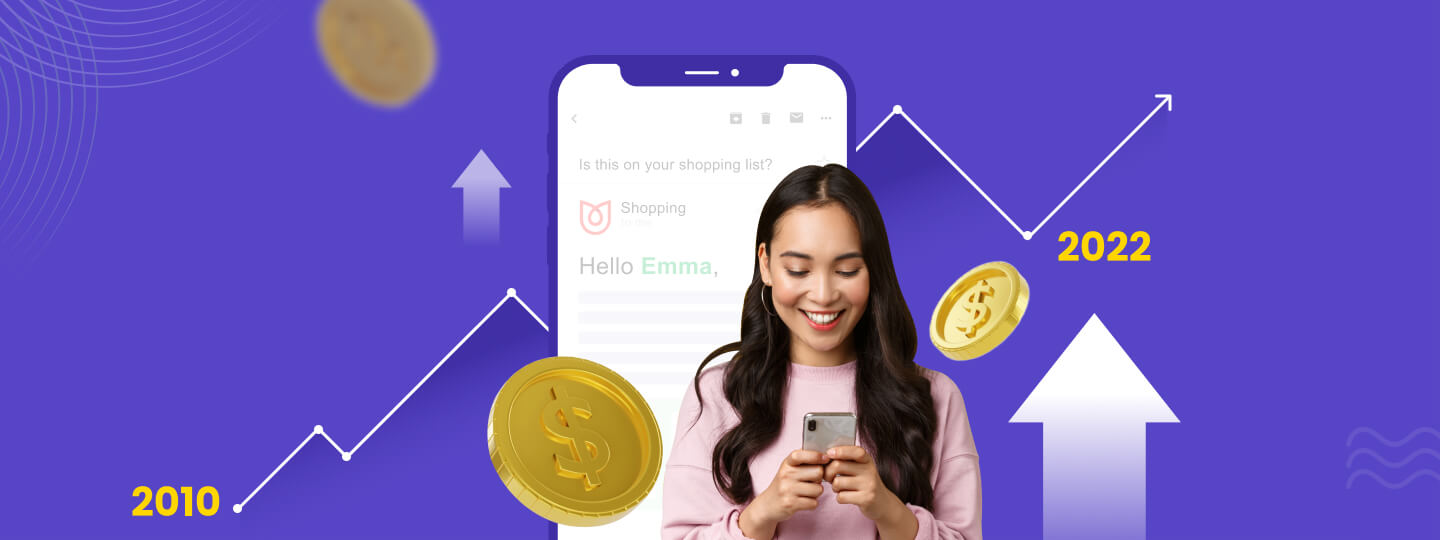Customer retention is the glue that holds businesses from falling apart. While acquiring customers is important, retaining existing ones is equally imperative to every business. Besides, it is much cheaper than the cost of acquiring fresh customers.
As per research, gaining a new customer can cost five to seven times more than retaining an existing one, depending on which industry you serve. In fact, the chances of selling products to an existing customer are 60 to 70% more than acquiring a new customer, which is only 5 to 20%.
Poor customer experience leads to decreased revenue and recognition for your business, driving your loyal customers to competitors.
As a matter of fact, 86 percent of consumers leave their trusted brands merely after two poor customer experiences. According to Mckinsey, brand loyalists (customers faithful to one brand without shifting to competitors), today are as low as 13%, who are constantly lured by their competitors with various offers and reasons to switch sides.
In this blog, we dive deep into every business’s common mistakes while retaining customers and how to avoid them.
Mistake #1 – Not unifying data to create a single customer view
Data silos have been a prevalent hurdle among entrepreneurs and marketers, hindering business operations and growth opportunities. According to a report, data silos curb 69% of businesses from gaining a unified perspective of their customers.
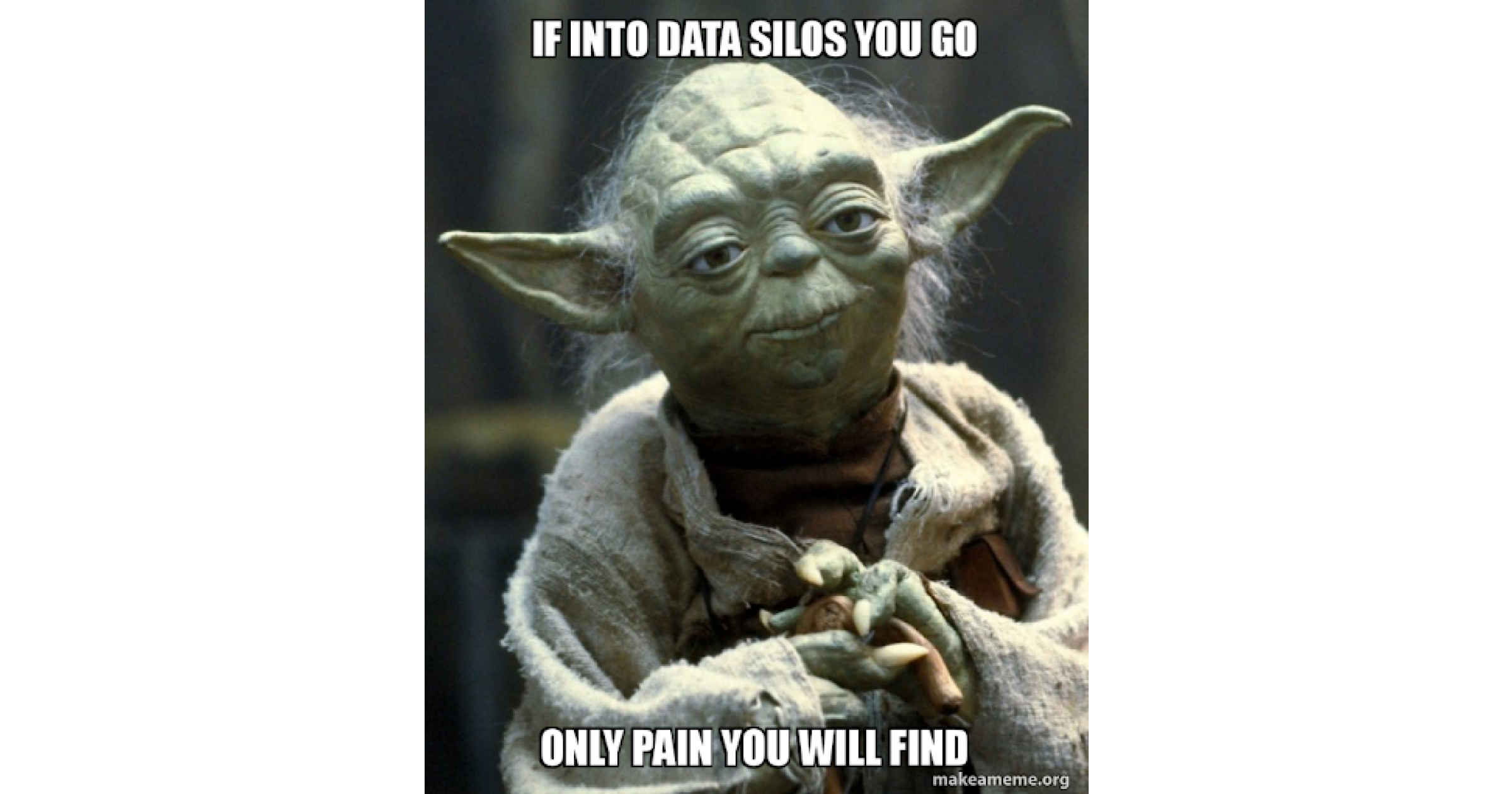
Data silos are formed when a data set is confined to a single department isolating it from the rest of the business ecosystem. It leaves you with an incomplete view of your customers’ activity and journey stages, resulting in a poor customer experience.
For example, your marketing team successfully runs a cart abandonment campaign nudging customers to complete their purchases. Unaware of this, your sales team emails the customers, reminding them to complete their purchase. This conflicting data leads to a poor shopping experience, leaving customers irritated and frustrated by your brand.
Silos limit the business’s ability to use the data to extract actionable customer insights leading to disjointed customer experiences, lack of customer trust, and poor customer retention.
Using a robust CDP prevents your business from drowning in this sea of inaccurate data sets. It helps you break down data silos by unifying data across all first, second, and third-party data points- website, app, CRM, social media, surveys, DMP, WhatsApp, emails, and more to deliver meaningful customer experiences.

As per recent research, only 30% of businesses are using CDP, which is expected to increase by 40% in 2023 compared to 2022.
Moreover, businesses that use CDPs saw an average increase of 10% in customer retention.
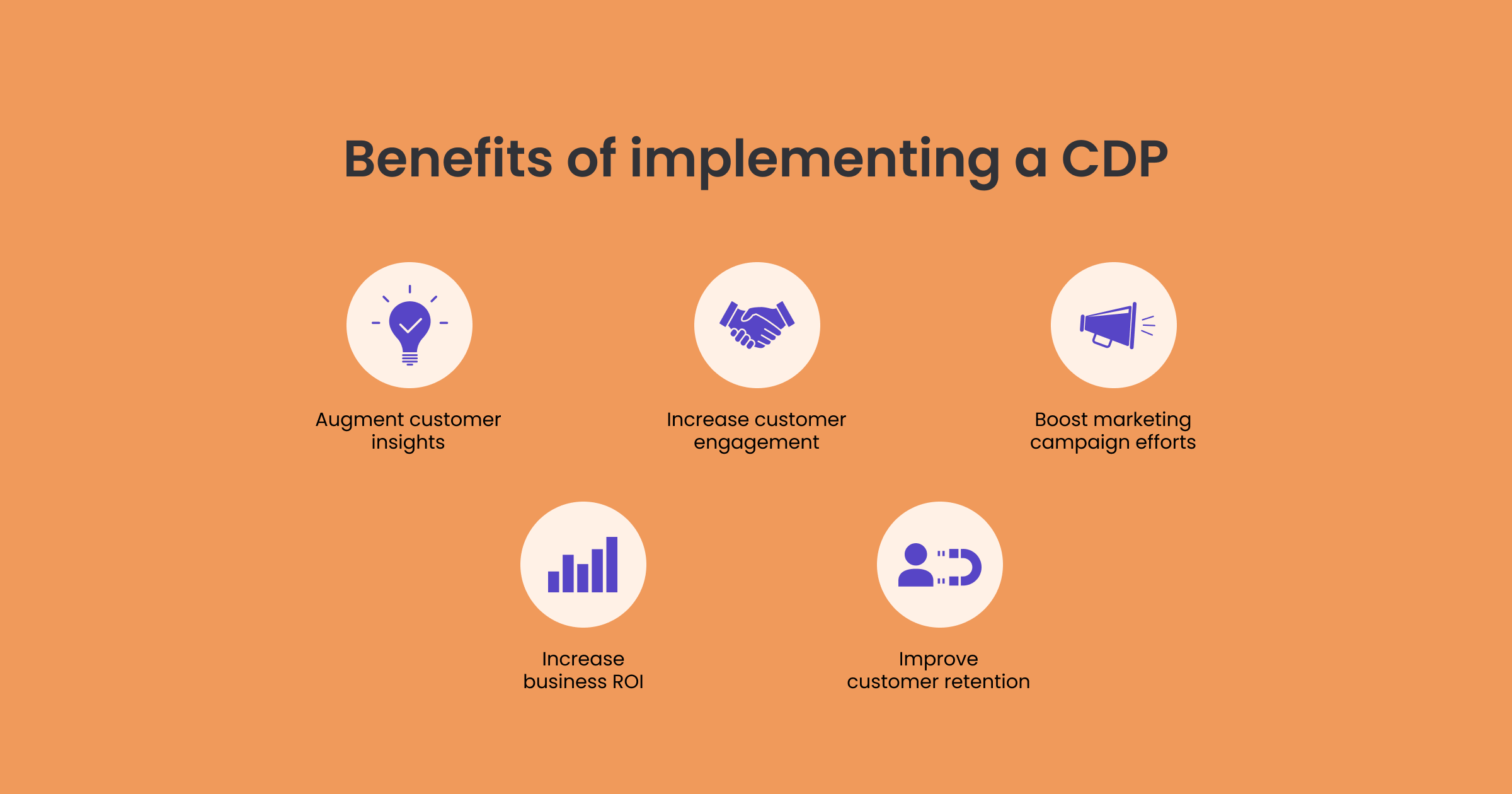
Integrating CDP allows marketers to curate targeted and personalized campaigns to boost customer engagement and brand relationships. You can leverage the platform to analyze customer behavior, orchestrate customer lifecycle, build multi-dimensional segments, and deploy customer-centric journeys seamlessly.
Here are a few use cases you can implement with CDP
Deliver contextual experiences online and offline
CDP allows you to map user journeys online and in-store to engage users with the in-moment details and deliver real-time product experiences. The data curated by CDP gives you access to details like customers’ store visit records, which helps to create contextual and personalized shopping experiences triggering more repeat purchases. You can also use this data to nudge online customers for an in-store purchase with geofencing.
For example, a customer visits an online store and adds a product to the cart but does not buy it. Later, the customer visits the brand’s retail store and receives a mobile push notification with a 50% discount on the same product, nudging them to make a purchase in-store.
Here, as the customer entered the shop, they triggered a geofence in real-time, which was recorded by the CDP enriching their offline shopping experience.
Deliver product recommendations using predictive segments
CDP enables you to segment customers based on their past behaviors to predict future actions. Predictive segments help you formulate the right recommendations for your customers in real time. It helps you project each customer’s intent and interest to stick with your brand via AI-driven algorithms. These algorithms help you understand your customer’s story and derive answers to questions like:
- Who are your high-value customers?
- Who has a higher propensity to churn?
- Which customers require more attention?
- Who are your brand loyalists?
This can help you craft tailor recommendations that resonate the most with individual customer needs.
For example, a customer who might be about to churn can be retained by recommending relevant offers and rewards. Thanks to predictive segments, it gives you control and visibility of your customer’s next actions to retain them effectively.
Download Impact Story – Learn more about Airblack, an edtech platform, that used CDP to drive its subscription rate
Mistake #2 – Delivering creepy personalized experiences to your customers
Customers are fond of online brands that recommend the right products based on their past purchasing history. It fast tracks their decision-making process and makes the shopping experience seamless.
But what if these online brands take it a tad bit far by revealing too personal insights?
Something similar happened in 2019 when Utah’s Mothers Lounge, a wholesale store for baby and mother products, created a marketing campaign targeting women by sending personalized gift cards congratulating them on their pregnancies- even when they were not pregnant.

The campaign was unsettling and creeped out a lot of women. Some of them complained about receiving it a year after a miscarriage, while some said it was addressed to their deceased daughter, which made customers not only frustrated but deeply hurt by the brand.
According to a report, 39% of consumers have experienced some form of “creepy” personalization tactic.
So does this mean that companies should stop personalizing customer experiences?
No, absolutely not! Marketers agree that personalization is the holy grail for businesses to build a solid customer base that sticks. It lets brands send one-on-one messaging, translating to more awareness, conversion, and long-term revenue growth.
However, brands that overdo personalization risk being perceived as creepy, resulting in customer churn.
Given below are a few factors which can help you build captivating personalized experiences without the creep set in:
Be mindful of your customers’ data & privacy
With data privacy becoming a growing concern among online customers, businesses must determine customer data usage and where to put a cap on it.
You can start by leveraging the data voluntarily given by users to curate tailored product recommendations. One way to do this is by leaning towards overt data collection techniques derived from customer consent.
It’s crucial to ensure what is acceptable to your customers to win their trust. Remember the META Fiasco? How they breached the data privacy of 533 MN users and dent their reputation!
Hence, be wary of your customer’s privacy to forge reliable customer relationships.
Draw the line between hyper-personalization and hyper-sensitive experiences
The Mothers Lounge campaign mentioned earlier is a classic example of differentiating hyper-personalized from hyper-sensitive customer experiences.
The key to preventing your marketing efforts from becoming a privacy invasion is to avoid using information that is too intimate or has no way for you to know about. Realizing this gap makes all the difference.
For context, let’s break this into two scenarios:
Scenario- 1: Sending back-in-stock mobile push notifications to a customer searching for a particular product is a helpful way to deliver a hyper-personalized and positive shopping experience to the customer.
Scenario-2: Sending customers a notification on the top restaurants for a date night based on an intimate phone conversation they had with their partner. This experience will definitely annoy the customer and make them brand averse.
Remember, there’s a thin line that separates hyper-personalization from hyper-sensitive experiences, and you should tread that line carefully.
Determine the right time to target customers
Many brands send personalized messages to their customers at an inappropriate time, which leads to anything but a pleasant experience for their customers.
For example, A customer views a series on Netflix and receives a mobile push recommending a new set of series in the middle of the night. This will definitely be irritating for the customer who is forced to wake up to the tune of their mobile notifications in the middle of the night.
So the next time you want to send those ‘3 am binge recommendations’ to your customers, pay attention to the delivery time.
Mistake #3- Not delivering integrated and cohesive customer experiences across channels
Customers today are more digitally savvy than ever. To keep them hooked to your brand, you must reach out to them across multiple channels in an engaging and meaningful way.
According to research, marketers who use three or more channels to execute a campaign earn a 494% higher order than those who use a single channel.
Omnichannel customer engagement is an excellent way for businesses to boost online engagement, build loyalty and drive customer retention if implemented correctly.
A study shows that, on average, companies with omnichannel customer engagement strategies retain 89% of their customers.
This proves that brands that adopt an omnichannel strategy have an edge over the others. And yet, most brands lack the awareness to distinguish omnichannel from multi-channel engagement.
Both multichannel and omnichannel marketing strategies use multiple channels to touch base with your customers. But that’s where the similarities end.
A multichannel marketing strategy uses all direct and indirect communication channels like emails, SMS, WhatsApp, mobile push notifications, social media platforms, and physical stores to send communication to their customers. However, these communications are isolated to each channel, forming a disintegrated customer experience.
On the other hand, an omnichannel marketing strategy uses all the communication channels, including physical stores, to send consistent communication to their customers, integrating one channel with another to deliver a cohesive experience across the board.
In simple words, multichannel marketing focuses on channels to send marketing communications, while omnichannel marketing puts customers at the focal point of their marketing strategy to deliver consistent communication across all the channels.
Here’s a quick distinction between the two:
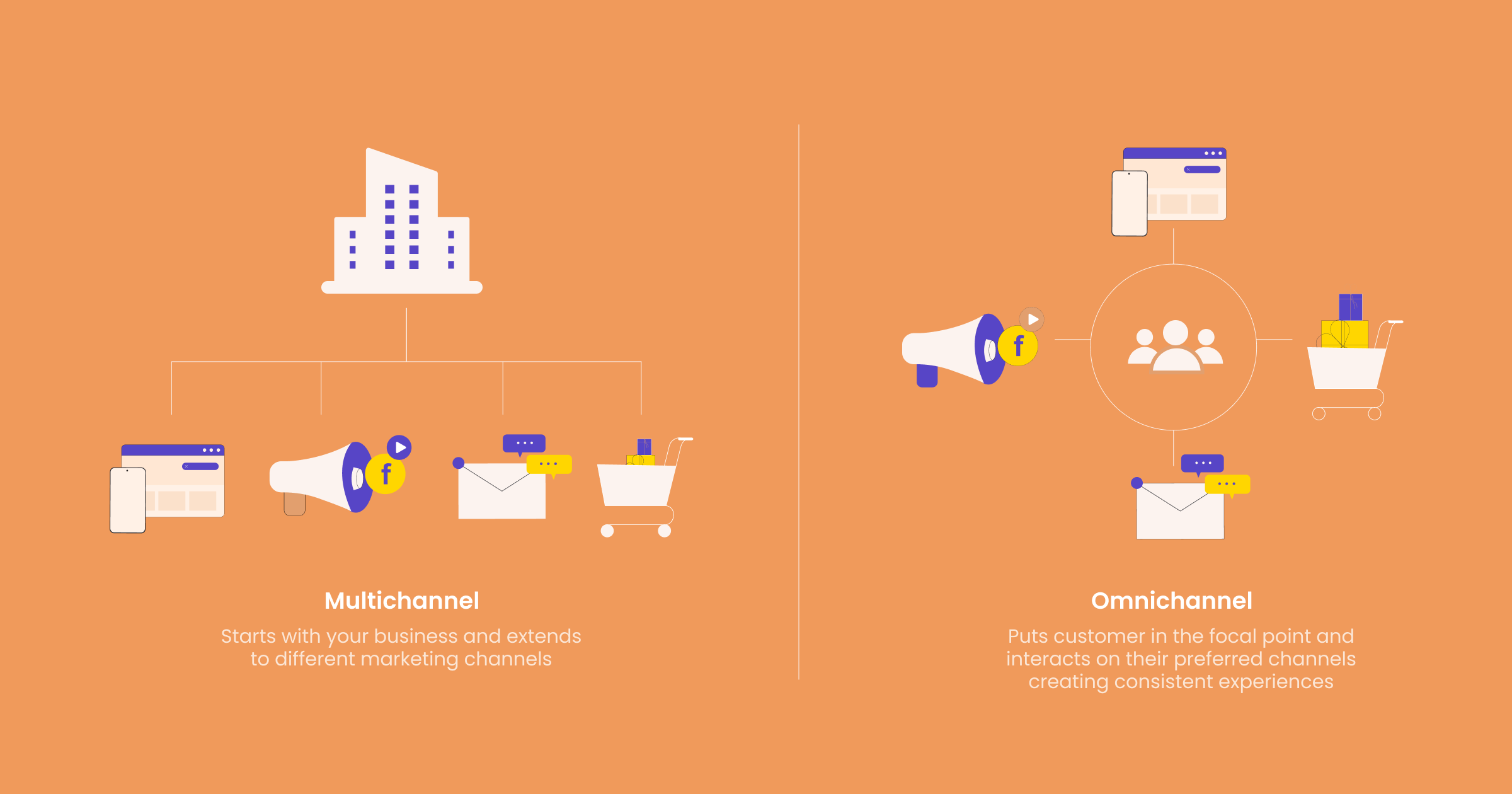
Aligning your marketing goals with a solid omnichannel strategy helps create opportunities to delight customers, making them feel wanted, adored, and appreciated.
Here’s an example of a brand that knocked it out of the park with a brilliant omnichannel strategy.
Pepperfry
Online shopping can be daunting for customers due to the uncertainty of product quality, refund policies, or the product’s genuinity. Pepperfry, a home furnishing brand in India, realized the issue and adopted an omnichannel strategy to bridge this gap.
Pepperfry synced its online store with an indulging in-person experience to achieve this goal. The brand assigned in-store design consultants who guide their customers to find the ideal home decor. Customers can go to the brand’s online store, select the products they like and visit the nearest Pepperfry Studio to check how the product is in person, where an in-store consultant suggests designs based on their tastes and preferences.
Once they are satisfied with the products, the customer can either make a purchase in-store or return home to buy it online.
As per reports, this strategy boosted Pepperfry’s sales by 10-15%.
Mistake #4- Not making the most of reward gamification
Can money buy happiness? Can giving rewards buy you, loyal customers? While the former is a debatable topic, the answer to the latter is a definite yes!
In today’s world of instant gratification, reward is the oil that fuels the customer loyalty engine. The more you reward your customers and show they are valued, the longer they stick with your brand.
Here are some stats that show why you need to incorporate loyalty programs into your customer retention strategy:
- 85% of customers have shown interest in sticking with a brand that offers a loyalty program.
- 62% of consumers are more likely to spend on a brand with a paid loyalty membership.
- 59% of paid loyalty members have a higher probability of choosing their selected brand over competitors, and 43% are more likely to make weekly purchases.
Thus, loyalty/reward programs are marketer’s secret weapon to:
- Boost business revenue
- Retain customers
- Encouraging more repeat purchases
- Build strong customer relationships
- Increase customer lifetime value (CLTV)
- Drive customer satisfaction
- Promote brand advocacy
In fact, the use of loyalty programs dates back centuries. In 1793, American retailers started giving out copper coins to every customer who purchased something. They later redeemed these coins on their next purchases from the same retailers in the form of discounts. As a result, retailers could retain customers and increase their sales through repeat purchases.
Nowadays, many loyalty programs are designed to fulfill unique business goals. While most are mundane and repeated, only a handful stand out from the crowd making a leader in the loyalty program space.
Here’s a quick read to learn more about the different types of loyalty programs.
Below are some examples of brands that leverage the power of loyalty programs to retain their customers by rewarding them.
Starbucks Game of Stars
Gamification is an incredible way to boost customer engagement in your loyalty program.
Starbucks is one such brand that raised the bar of loyalty programs to turn occasional buyers into frequent customers.
The brand creatively gamified a point-based loyalty program with a ‘collecting stars for rewards’ strategy, which encouraged its buyers to collect points or, in this case, the ‘stars’ on every purchase they made.
For every Rs.300 spent, the customer would receive one star.
For example: If a customer makes a purchase of Rs. 1200, they get to collect four stars in a single order.

Customers who collected at least a minimum of 25 stars can redeem it to buy a customized drink for free! And the more stars you collect, the better the reward gets.
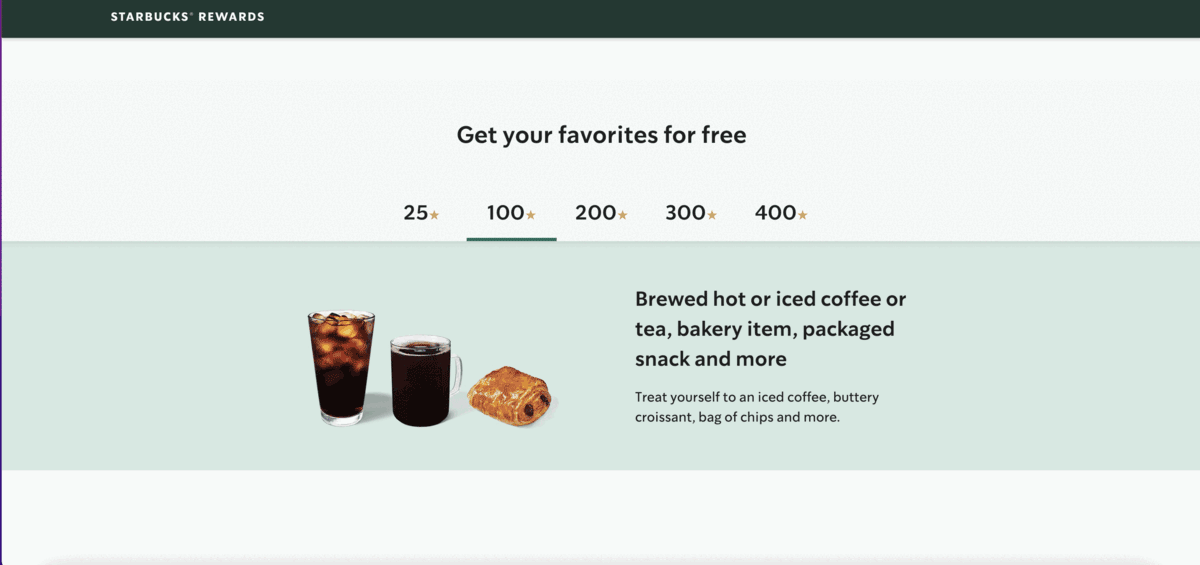
However, the brand didn’t stop there! The famous coffee chain went above and beyond with its loyalty program strategy to encourage retailers with earning opportunities.
According to this strategy, customers who purchase Starbucks packaged coffee at a listed retail grocery store earn stars. All they have to do is enter a ‘Star Code’ printed on a package sticker onto the app, and the stars get credited to their app wallet. This strategy triggered shoppers to buy Starbucks coffee from more channels and helped retailers reap the benefit.
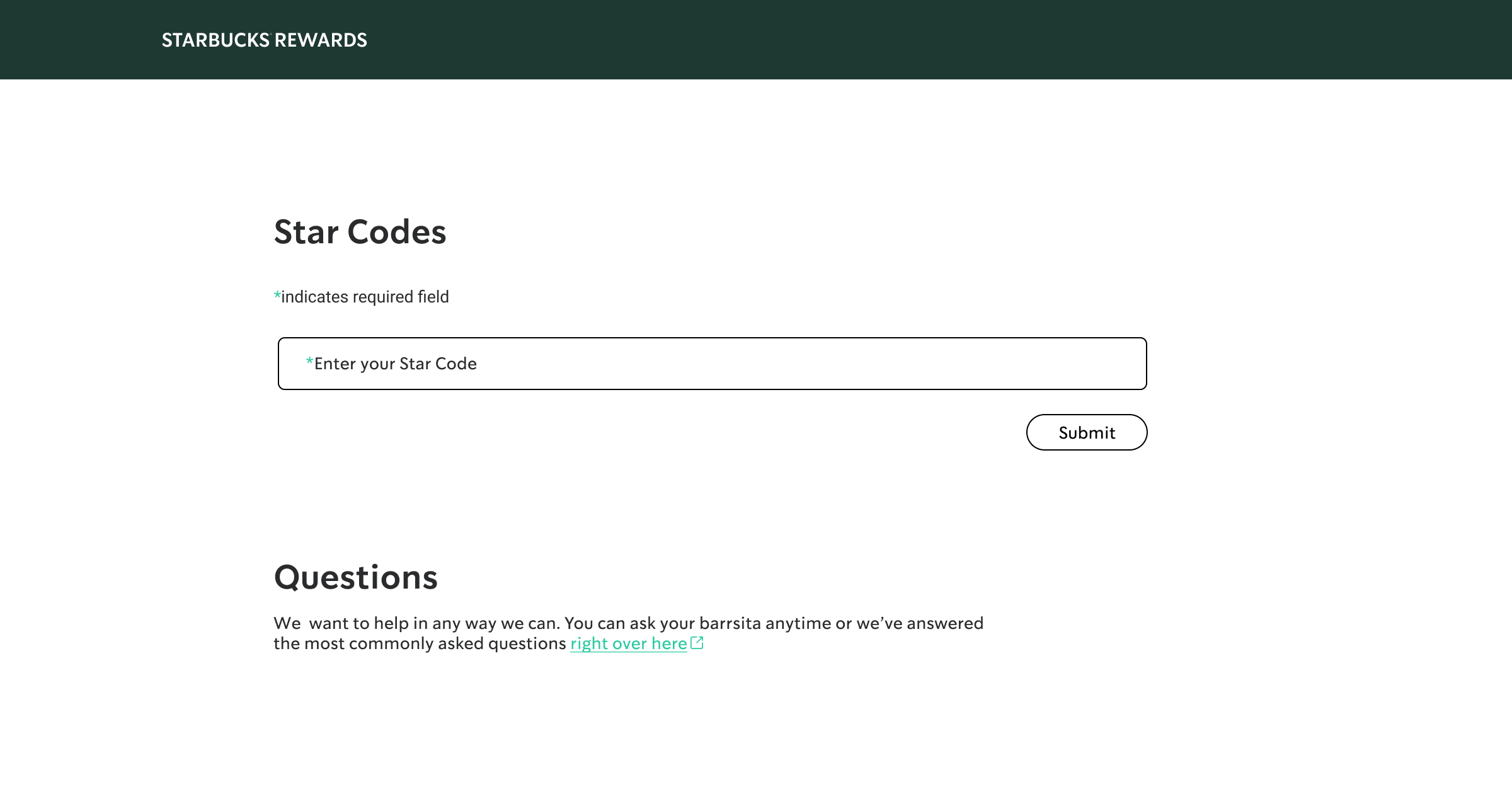
We call this an impactful retention strategy with a dash of social responsibility. Interestingly, Starbucks isn’t the only one exceeding expectations when it comes to customer retention.
Rewards Bonanza by CRED
CRED is a credit card payment platform that rewards its members for clearing their credit card bills on time and more.
The fintech app uses reward gamification as the centerpiece to drive its north star metric- customer retention.
To engage its customers, CRED app incentivizes them with reward points to complete mundane tasks like paying credit card bills, rent, and shopping for groceries while having fun.
The app offers a buffet of rewards for accomplishing different tasks on the CRED app.
Types of CRED rewards to draw inspiration from
Offers and Discounts: Every time a CRED member pays their bill, they get CRED coins of the same amount, which users can redeem to claim rewards like cash back or offers from top brands.
Refer a friend: CRED offers Rs.1000 as cashback on referring or inviting a friend to sign up on the app.
Everyday Jackpot: CRED offers everyday Jackpots to its app users through shopping vouchers or additional discounts on top brands.
Quiz: Play the CRED quiz and collect rewards for every right answer. Maximum three correct answers earn points that can be redeemed against discounts or cashback.
CRED Store: You can also shop for groceries and pay using your CRED coins on the app.
CRED Holiday Deals: The fintech app offers holiday packages to select locations with amazing discounts against the CRED coins accumulated in your CRED wallet.
CRED Bounty: An exclusive limited-period loyalty program where you buzz a contact from your list and partner up to win big rewards. Bounty winners get unmatched rewards- cashback, CRED coins, coupons, or the bountiful gift of the day.
CRED’s extensive customer loyalty program helps them keep users hooked on the app, build a personal relationship with the customer, and make them feel exclusive and privileged.
Loyalty or reward programs are an often-undermined aspect of customer experience, but with the right tools and execution, they can effectively boost your retention metrics.
Mistake #5 – Ignoring customer feedback (The most important one)
Some of you might wonder how customer feedback drives retention.
Well, let’s put it this way, how can you retain your customers effectively if you don’t know how they feel about you?
Customer feedback is vital in delivering unique product experiences that meet customer expectations by pointing out the flaws in your product or service. It helps you discover your customers’ Point of View (POV) about your product or services and how it benefits or doesn’t benefit their needs.
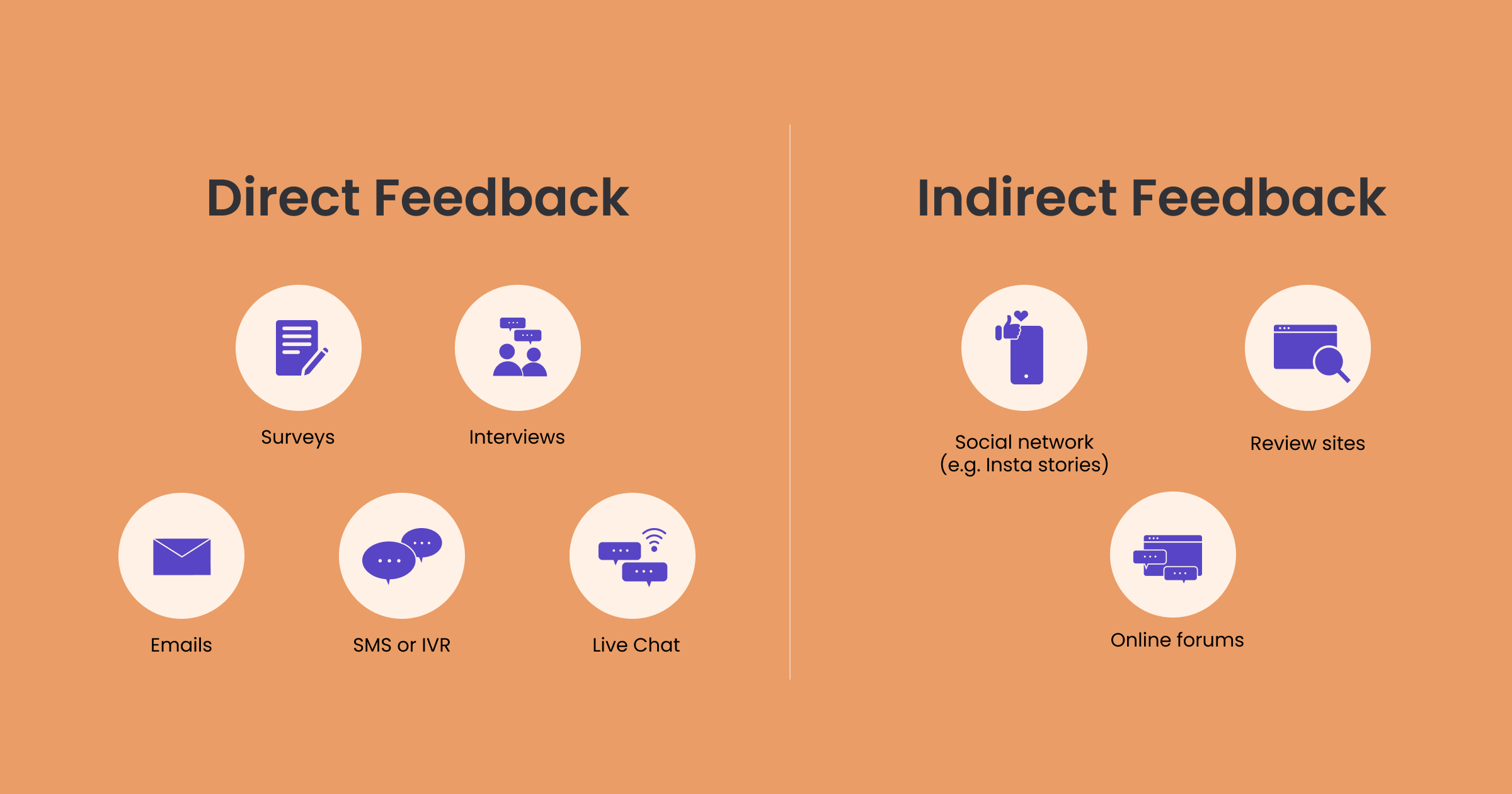
Brands that listen to their customers grow 10X faster; the rest lose them to bad customer experiences.
Here are some of the benefits of leveraging customer feedback for your business.
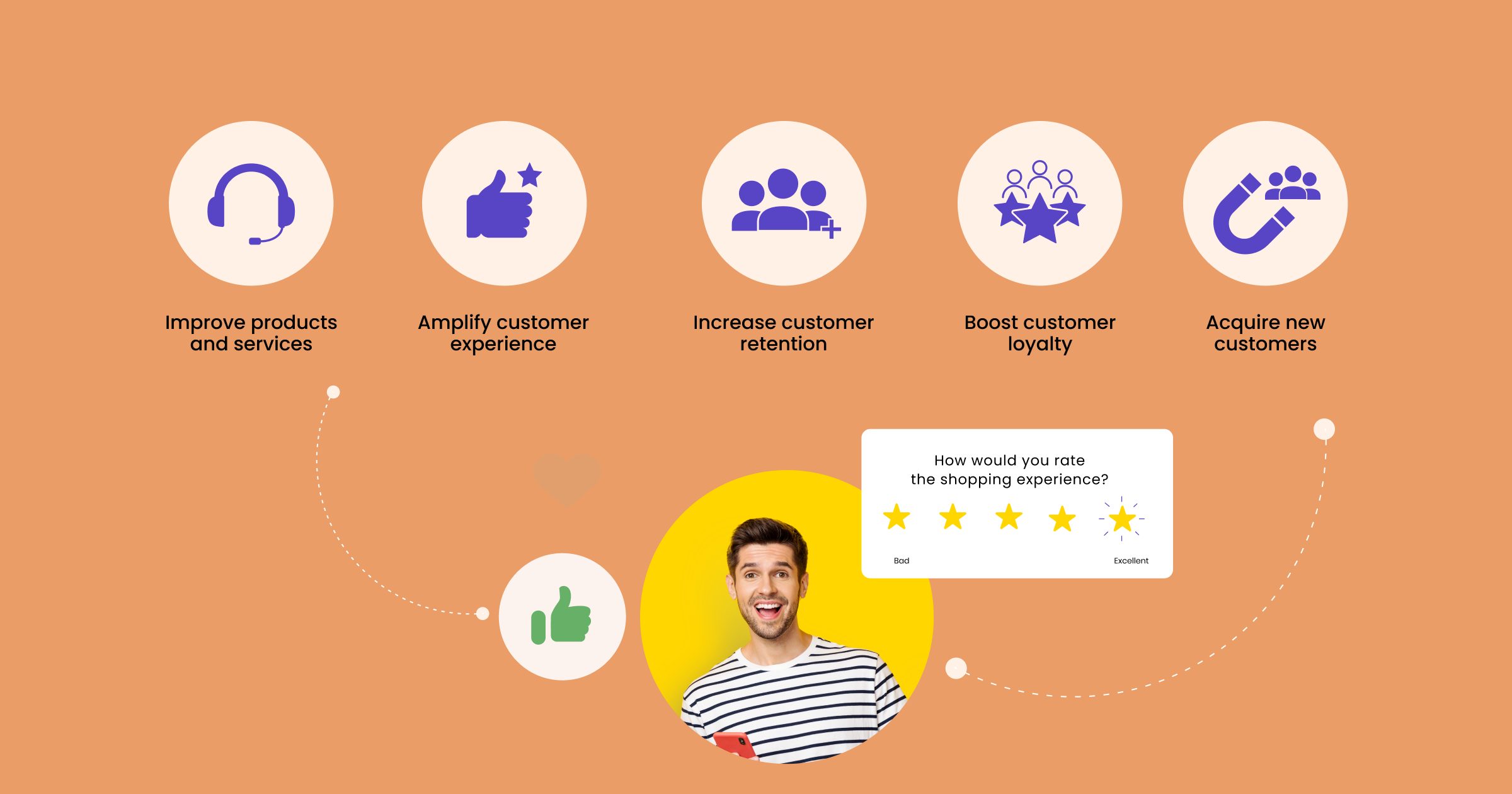
- Improve products and services- Customer feedback is a one-stop strategy that points out aspects of your products or services that require improvement.
- Amplify customer experience- Collecting customer feedback gives you insights about customer expectations to provide an impeccable customer experience.
- Increase customer retention by reducing churn- Feedback opens new avenues for businesses to tend to their customer needs, which reduces customer churn and enhances retention.
- Boost customer loyalty- Feedback helps you identify the loopholes in your engagement funnel, increasing customer loyalty.
- Acquire new customers- Loyal customers are a powerful weapon in your marketing vault. Positive feedback from brand loyalists can direct potential customers your way, boosting customer acquisition.
In a nutshell, customer feedback allows brands to interact with their customers and comprehend their needs directly. It helps you scour out valuable insights about the aspects of your product or services that need your attention. Businesses that leverage customer feedback gain useful information to win customer trust by painting a customer-oriented outlook.
Conclusion
Customer retention lays a strong foundation for businesses’ growth and success. Improving customer retention translates to better customer experiences resulting in revenue growth, increased loyalty, better ROI, and new customers. We understand that it is difficult to retain each and every customer for reasons beyond your control. But just a 5% in retention can boost your company revenue by 25-95%.
Moreover, avoiding all the pitfalls we discussed above can help you build high-impact customer retention strategies empowering your business to move to the top rung of the ladder.
Deliver Meaningful Messages For Your Business Today, Request A Demo Now































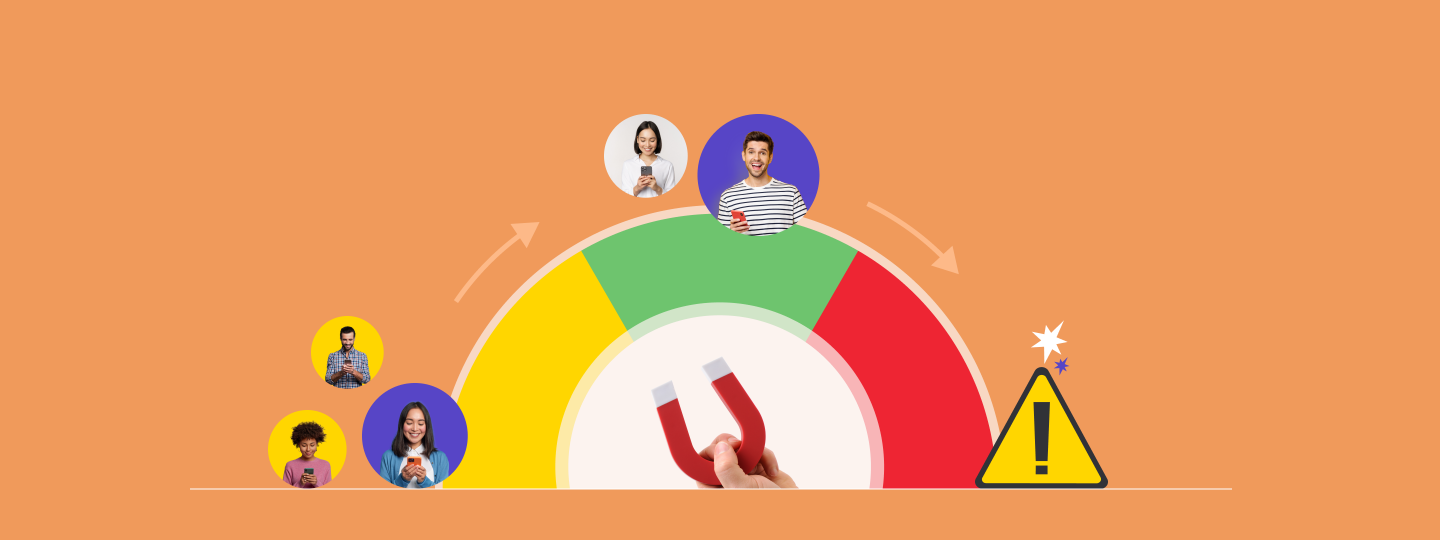

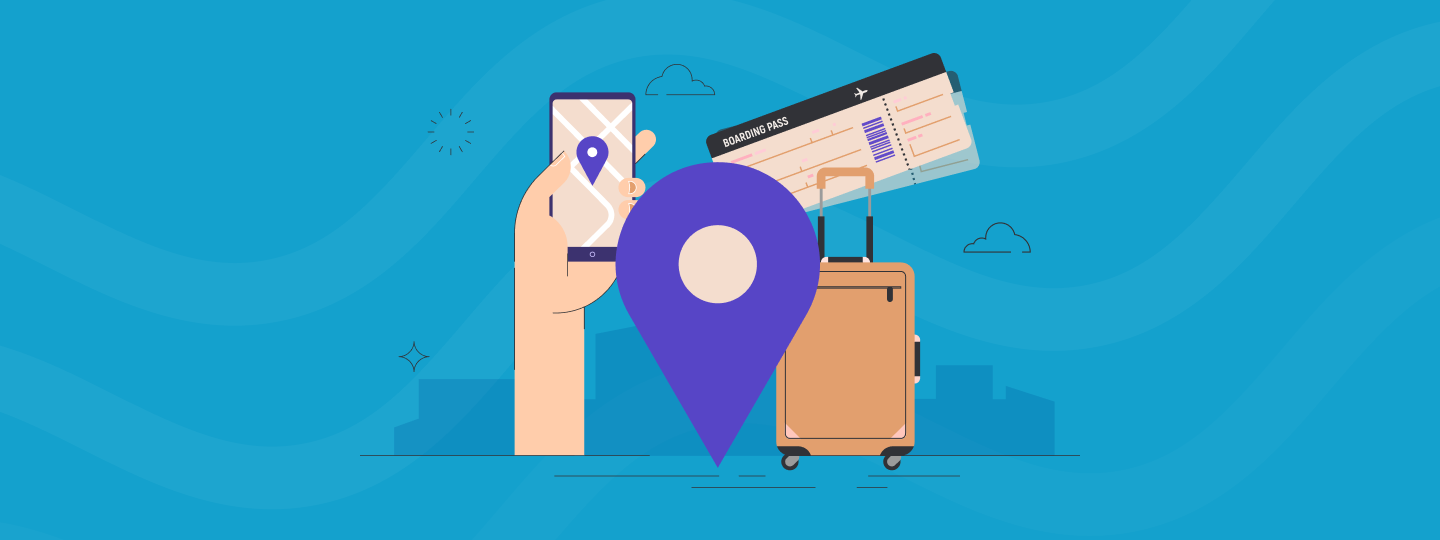
 Diksha Dwivedi
Diksha Dwivedi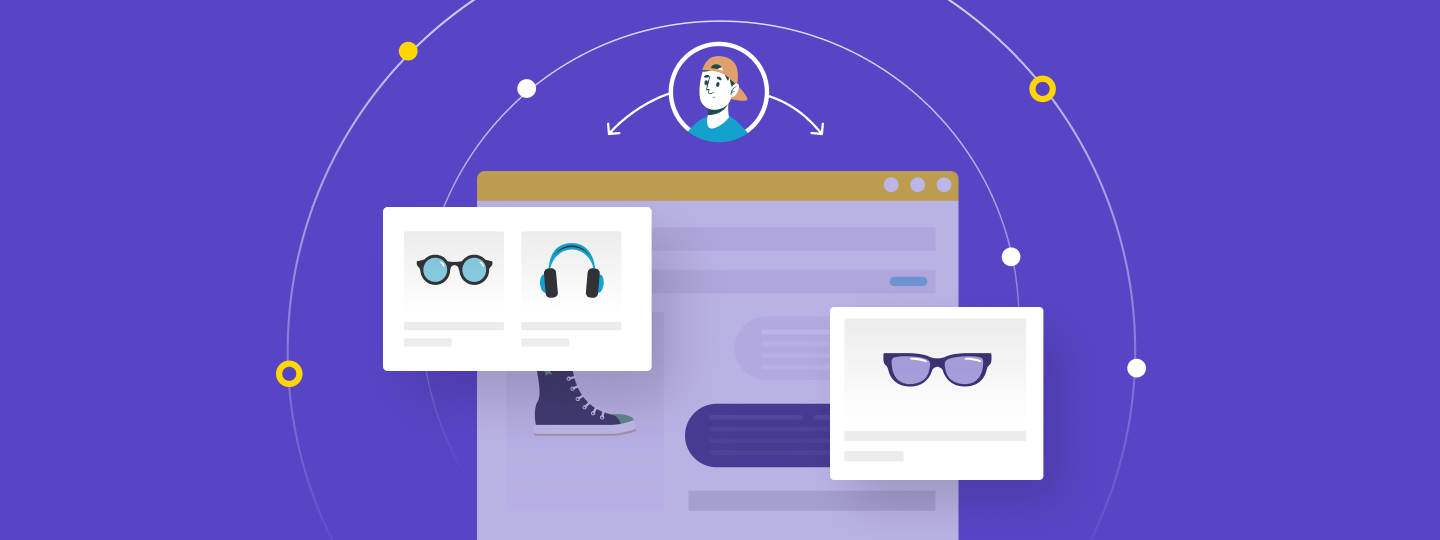
 Vanhishikha Bhargava
Vanhishikha Bhargava